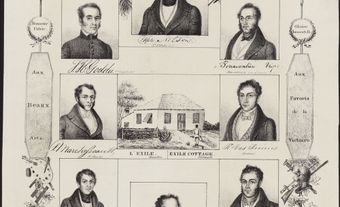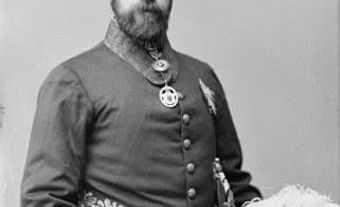Local Elections
Local elections are the procedures by which citizens in a community choose the MUNICIPAL GOVERNMENT. Federal and provincial election systems are generally designed by a nonpartisan independent agency, reducing the possibilities for gerrymandering or for the drawing of election rules to the advantage of incumbents (see REDISTRIBUTION). But in Canada, responsibility for redesigning local elections normally rests with the municipal council itself.
Constituency boundaries, known as "wards" in municipal elections, may be one of 3 types. In smaller urban centres, election at-large is common; the municipality as a whole is the constituency. Vancouver is the largest city using this system, which works to the advantage of corporate, professional and blue-ribbon civic groups. To reduce the costs of city-wide campaigning, other large cities such as Edmonton, or Winnipeg prior to 1971, have adopted division into a few large multi-member "strip" wards that pay no attention to natural geographic or community boundaries. Wards may also be drawn in a "block" design to encompass neighbourhoods, a system favoured by left-of-centre politicians and leaders of community associations or some minority groups. Montréal, Toronto and now Winnipeg elect on this basis.
Canadian local elections are nominally nonpartisan, which means that candidates are not identified by party on the ballot paper. These elections, unlike provincial and federal elections, are held at a fixed time (designated by the Municipal Elections Act). Candidates' names are listed alphabetically on the ballot and those elected are usually independents or loosely attached to a purely local party. Voter turnout is low (30% is usually considered good), and incumbents enjoy a considerable advantage because voters recognize their names. At-large elections magnify both these conditions because the voter must make so many ballot choices. To become a candidate usually requires only a nominal cash deposit and the filing of a petition on the candidate's behalf by a small number of electors. Campaign contributions are not tax deductible in most provinces.
Historically the right to vote was tied to both gender (male) and property holdings, and the property had to be of a certain value (although this restriction became less important in the 20th century as values were not adjusted for inflation). The tenant of a house is a property holder; a lodger is not. An apartment dweller may or may not be considered a property holder, depending on provincial legislation. The practice of plural voting, ie, being entitled to vote in each municipality or ward (sometimes in each polling division) where property is owned, was widespread until well after WWII.
Since the mid-1960s, the provinces have widely extended the FRANCHISE so that it is virtually universal and a right of citizenship. Today there is frequently a municipal enumeration before an election. Votes are normally tabulated on a plurality basis, and the person (or persons, where there is a multi-member ward or at-large election) receiving the most votes is declared elected. To increase artificially the number of votes winning candidates have received, various provinces in the past, eg, Alberta and Manitoba, have permitted their municipalities to employ a form of proportional representation using a transferable ballot.
Finally, unlike federal and provincial politicians, municipal councillors are elected for an established term of 2 or 3 years, which may have policy implications, eg, unpopular or controversial decisions would not normally be expected of a council in the months immediately prior to the fixed voting date.
See also CITY POLITICS.

 Share on Facebook
Share on Facebook Share on X
Share on X Share by Email
Share by Email Share on Google Classroom
Share on Google Classroom



